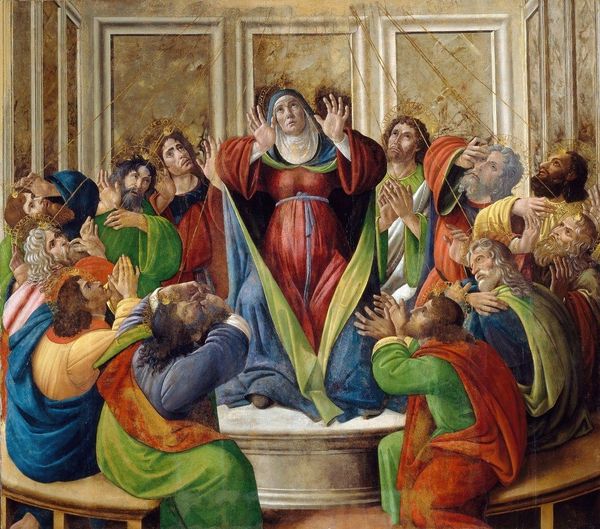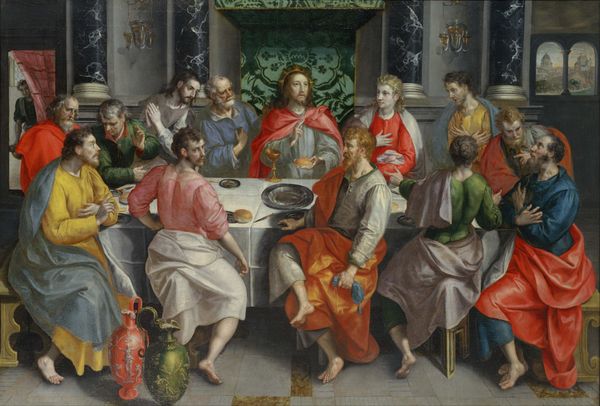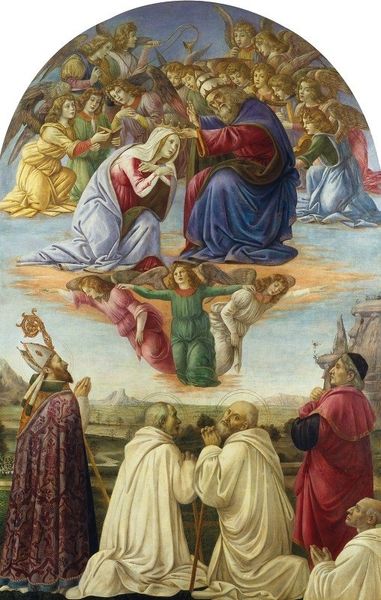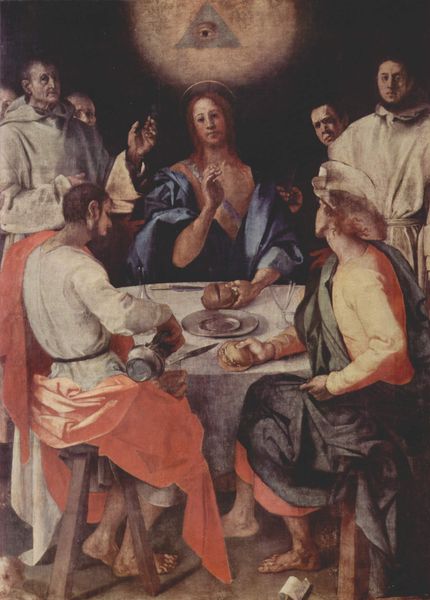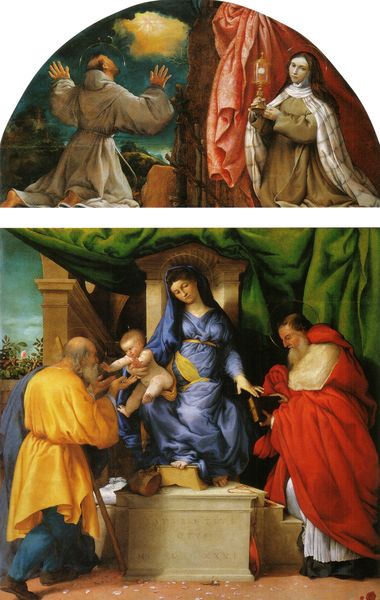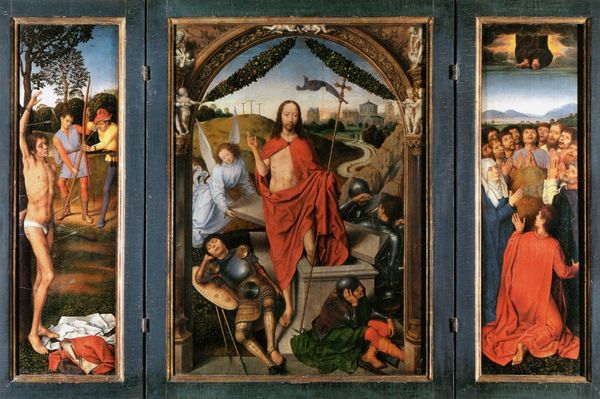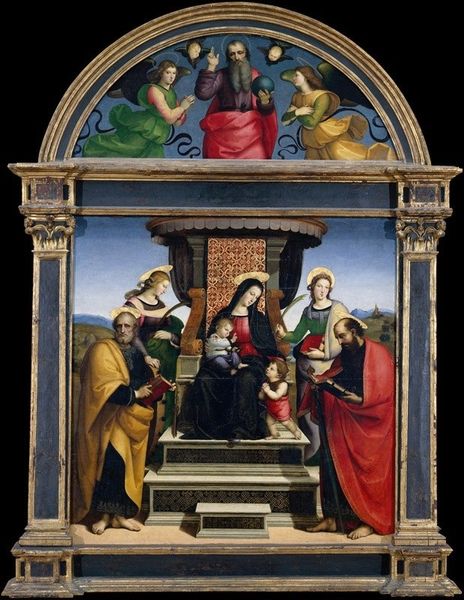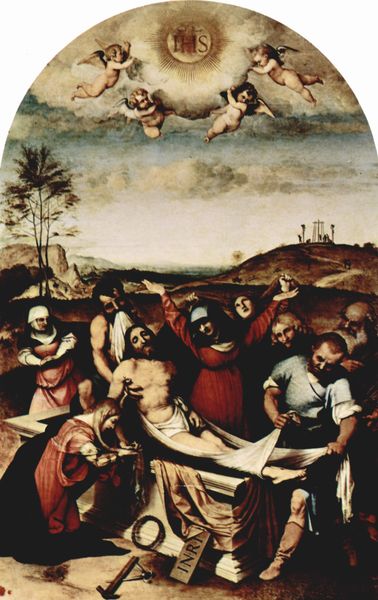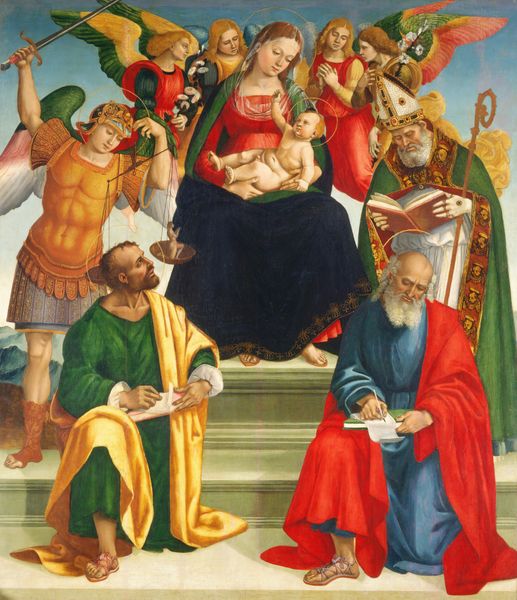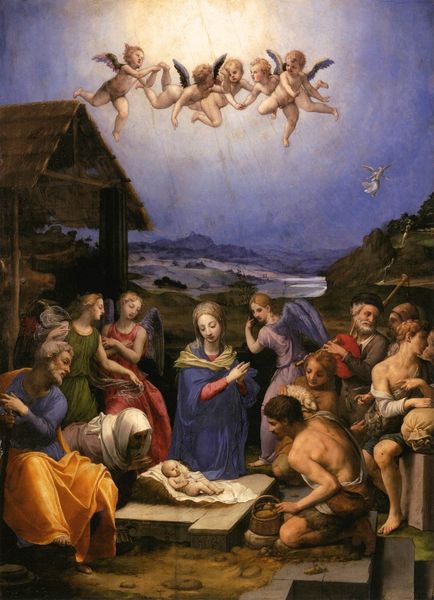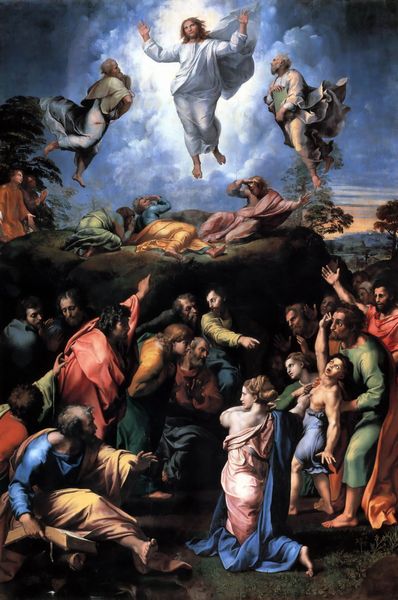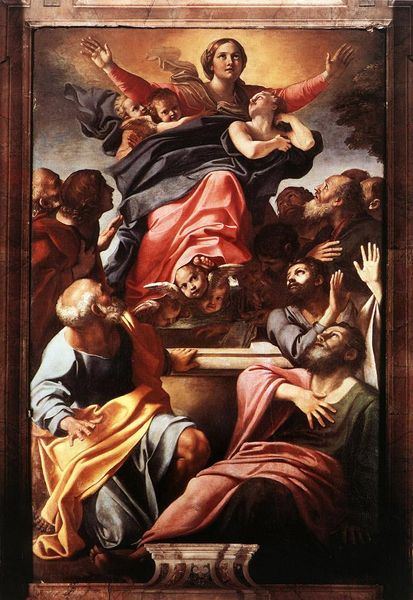
tempera, painting
#
high-renaissance
#
tempera
#
painting
#
holy-places
#
figuration
#
handmade artwork painting
#
group-portraits
#
history-painting
#
italian-renaissance
#
portrait art
#
watercolor
Dimensions: 267 x 163 cm
Copyright: Public domain
Curator: Raphael’s “The Crowning of the Virgin,” dating from 1503, is before us today. I find it so compellingly serene, despite the weight of its subject matter. It’s painted in tempera, and I can really see that delicate quality. What's striking you? Editor: The division! The painting is cleanly split in two: earth below and heaven above. There’s an immediacy in this, separating earthly sorrow from heavenly celebration so rigidly. I'm wondering what commentary Raphael might be offering us on the human condition here? Curator: Absolutely. Note how the lower portion, depicting the Apostles, gazes upwards toward Mary’s coronation. In a sense, the division reflects the socio-political hierarchy of the Church itself, demanding devotion from below and offering grace from above. The virgin embodies the ideal women that one should look up to. The lily motif erupting from her empty sarcophagus signifies Mary’s purity, linking to gendered themes prevalent within the Church, then and now. Editor: That’s a great insight into the historical moment that made the image. Beyond the Church's messaging, though, the composition invites contemplation on individual faith, as an intensely personal connection. Think about that color palette, the harmonious composition! These design choices offer an idealized view. We should be questioning what ideals were imposed by religious powers onto women, as well as onto the people through visual culture. Curator: But isn’t that Raphael's genius? To present these potent messages within a palatable aesthetic? The sheer beauty could have allowed such potent messaging to be absorbed easily by the public, shaping their worldview. Editor: And therein lies the power of art! Analyzing such potent pieces allows us a look back through history at the beliefs imposed upon others. To think critically on how and why. Thanks for exploring this fascinating and complicated piece of history. Curator: Thank you for making sure that art engages with present questions and critical thoughts about history.
Comments
No comments
Be the first to comment and join the conversation on the ultimate creative platform.
